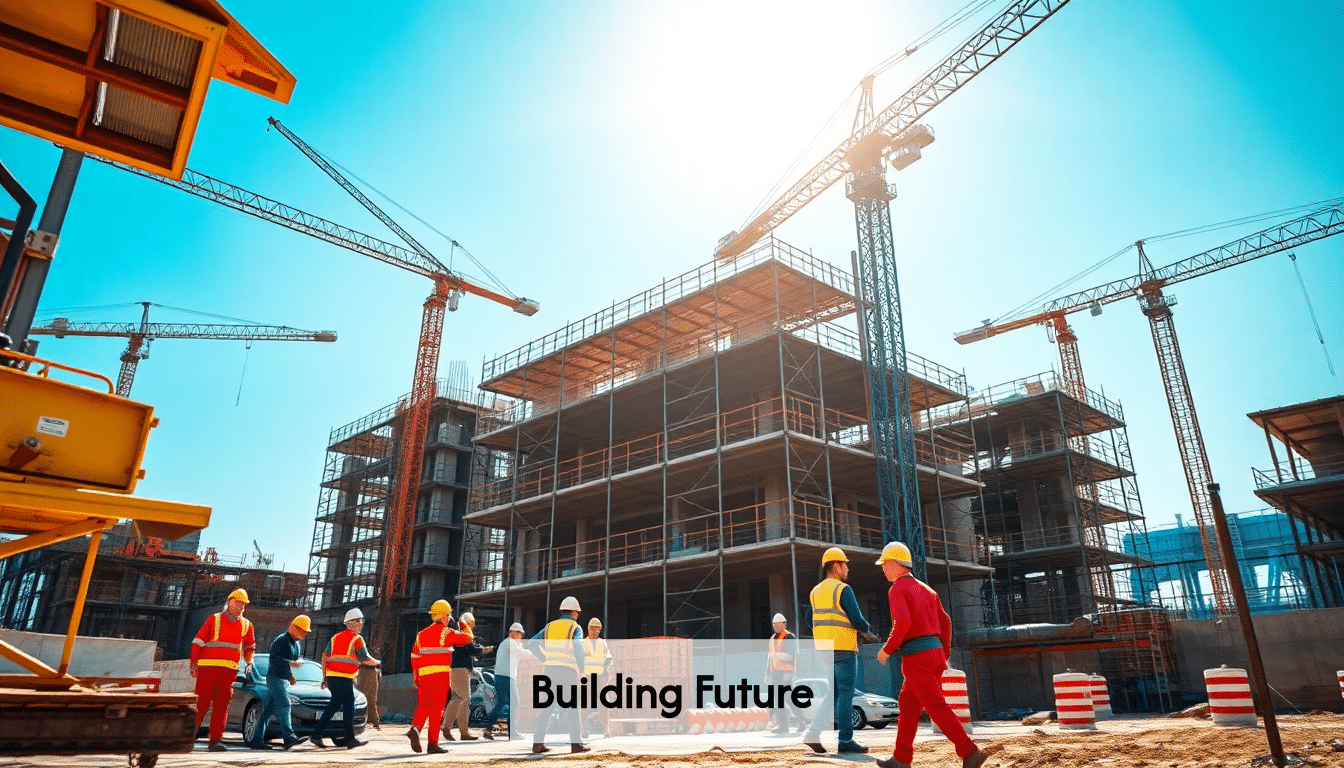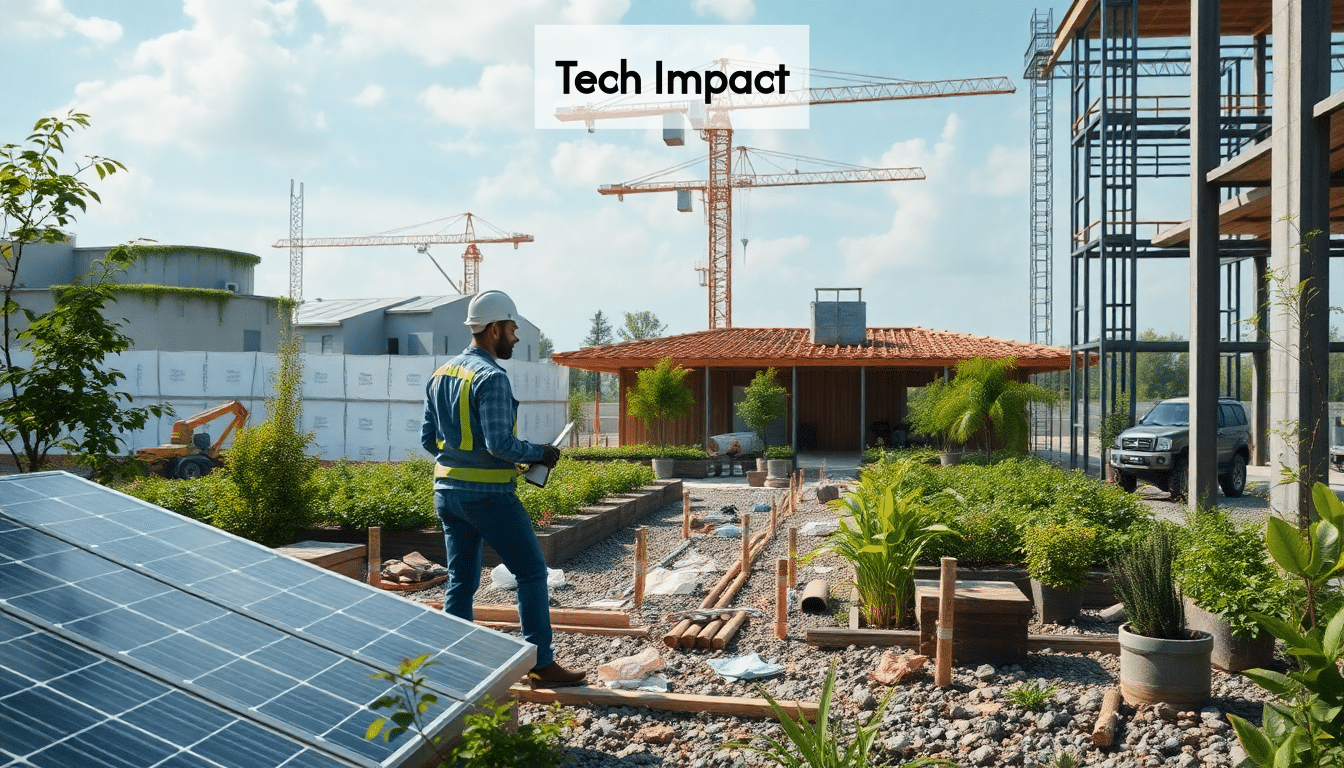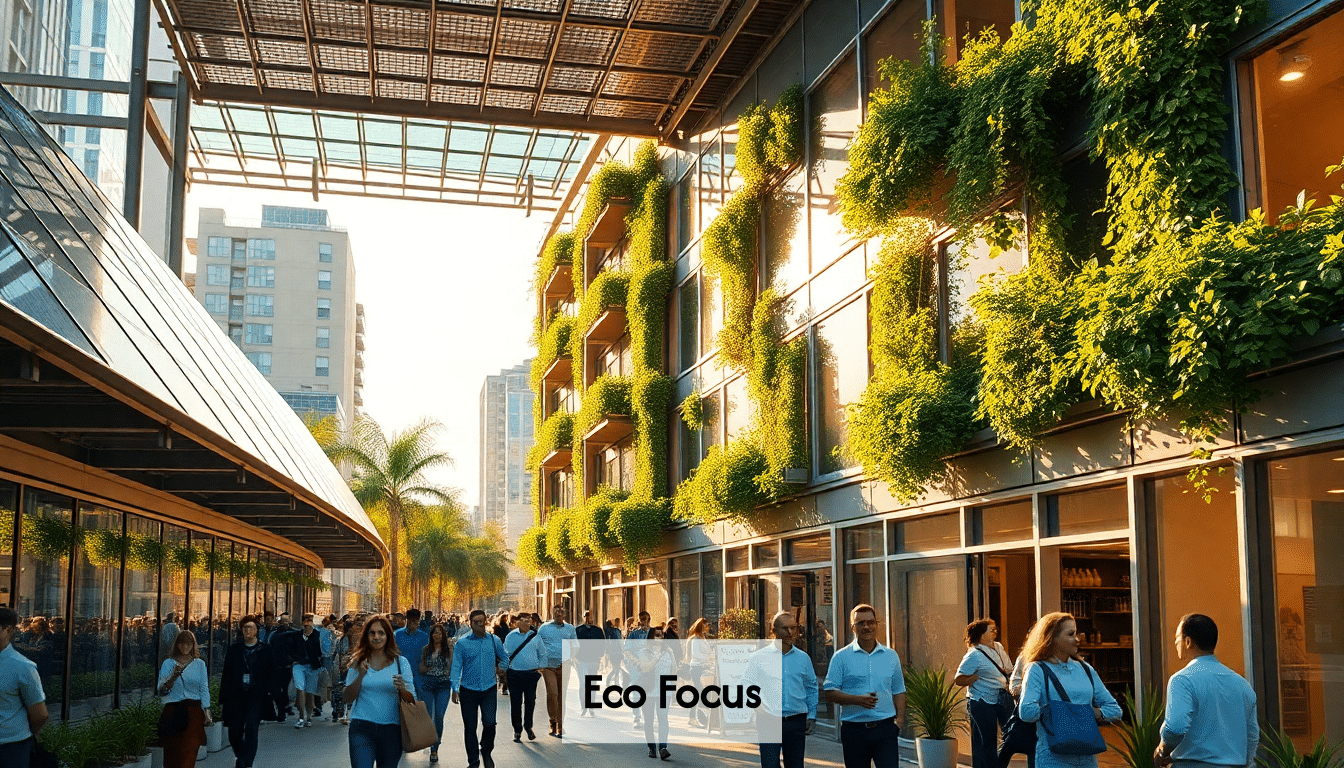Introduction to Current Trends in the Construction Industry
As someone who has been immersed in the construction landscape for years, I can confidently say that we are witnessing a remarkable evolution within the industry. Current trends in the construction industry are not just reshaping how we build; they are defining the very future of construction itself. From implementing cutting-edge technology to embracing sustainable practices, these construction trends are setting the pace for growth and innovation.

Let’s face it: the days of shoddy craftsmanship and inefficient project management are behind us. In today’s commercial construction industry trends, we’re seeing a strong shift towards adopting advanced tools such as Building Information Modeling (BIM) and techniques like modular construction. These innovations streamline the construction process, drastically reducing waste and time—two critical factors in an industry that thrives on efficiency.
Moreover, the latest trends in building construction point toward a heightened focus on sustainability. Green building practices and eco-friendly materials are not just buzzwords anymore; they are becoming requirements as stakeholders acknowledge the environmental impact of their projects. According to the U.S. Green Building Council, about 40% of the nation’s energy consumption stems from buildings, making it imperative to integrate these practices into our construction trends.

The construction industry future trends also highlight the importance of skilled labor, as companies are increasingly investing in training and development to combat workforce shortages. Quotes from industry experts emphasize this growing concern. For instance, Mark O’Neill, a managing partner at a leading construction firm, notes, “Investing in our workforce is paramount; the future of construction relies on skilled hands and innovative minds.”
So, buckle up as we delve into these construction market trends and uncover how they are revolutionizing the sector for better, smarter, and more sustainable outcomes!
Key Construction Industry Trends to Watch in 2024 and Beyond
As we gaze into the crystal ball of the construction industry, it’s clear that 2024 and beyond promise to bring some fascinating trends that could reshape our approach to building. One of the biggest construction trends we should keep our eyes on is the integration of artificial intelligence (AI). From predictive analytics to automated tasks, AI is stepping in to streamline processes that can sometimes feel laborious. For example, AI tools can analyze vast amounts of data to predict project risks and optimize resource allocation, offering construction managers a new level of precision.
Furthermore, we cannot overlook the emergence of smart buildings, equipped with Internet of Things (IoT) technology. Imagine being able to control lighting, heating, and security systems from your smartphone! As more commercial and residential projects adapt to smart tech, this construction trend will enhance energy efficiency and comfort. According to a report by McKinsey & Company, the global smart building market is expected to reach $1.5 trillion within the next few years, which speaks volumes about its importance.

Another critical player in the arena of construction industry trends is sustainable construction practices. More than a fleeting fad, sustainably sourced materials and energy-efficient designs are here to stay. Not only does this align with global environmental goals, but it can also result in significant cost savings over the building’s life cycle.
Also gaining traction is the concept of prefabrication and modular construction. Taking a page from IKEA, where components are pre-manufactured in a factory and then assembled on-site, this approach is becoming increasingly popular. It allows for faster project completion and reduced waste—two of the hottest tickets in current trends in construction industry.
As we navigate through these trends construction industry, it’s exciting to think about what the future holds. Companies that embrace these innovations will likely not only keep pace but also outperform their competitors in a rapidly evolving construction marketplace.
Impact of Technology on Construction Trends
If you think about it, technology has always been a game-changer in the construction world. As a self-proclaimed tech enthusiast, I can’t help but marvel at how construction trends are evolving thanks to some seriously nifty innovations. From project inception to completion, technology is reshaping our work, and trust me, it’s nothing short of revolutionary.
One of the most exciting current trends in the construction industry is the increasing adoption of Building Information Modeling (BIM). This advanced technology allows architects, engineers, and contractors to collaborate in a virtual environment, creating a comprehensive digital representation of a project. Not only does this facilitate better communication, but it also helps to catch potential issues before they become costly surprises on-site. BIM is transforming construction management trends, enabling teams to manage schedules and resources with impeccable accuracy.
Another technology that’s making waves is the advent of drones. Yes, those flying gadgets aren’t just for capturing stunning aerial photos at birthday parties! Drones are becoming essential tools in construction, assisting in site surveys and inspections. They can cover large areas in a fraction of the time it would take a human, collecting data that ensures projects remain compliant and within budget. I’ve heard stories of companies saving weeks on timelines just by integrating drone technology into their workflow.
Let’s not forget about augmented reality (AR) and virtual reality (VR). These technologies are stepping into the spotlight, allowing stakeholders to visualize what the finished product will look like before the first brick is laid. Imagine putting on a VR headset and walking through your future home or office space! AR can also assist on-site workers by overlaying digital information onto real-world environments, ensuring everyone is on the same page.
Of course, one cannot overlook the rise of construction management software. With solutions like Procore and PlanGrid, project managers can keep track of timelines, budgets, and workforce productivity all in one place. These tools play a vital role in current trends in the construction industry by enhancing collaboration and communication across different teams.
In conclusion, the impact of technology on construction trends is undeniable. These advancements not only improve efficiency and safety but also redefine what we can achieve in the construction sector. As we continue to embrace these construction market trends, I can’t help but feel a surge of excitement for what lies ahead in our industry.
Sustainability and Green Building Trends in the Construction Market
In an era where climate consciousness is at an all-time high, it’s no surprise that sustainability is taking center stage in the construction market. Having spent a considerable amount of time discussing the importance of eco-friendly practices with fellow construction enthusiasts, I have come to realize that the shift towards green building is not just a trend; it’s a necessity for the future of our planet.
One of the most compelling construction trends we’re witnessing is the emphasis on sustainable materials. Architects and builders are increasingly opting for resources that are recycled, renewable, or locally sourced. From bamboo flooring to reclaimed wood beams, these materials not only minimize environmental impact but also add unique character to projects. The construction industry future trends reflect a newfound commitment to sourcing materials that boast low embodied energy, leading us toward a greener tomorrow.
Another innovative approach gaining traction is the implementation of energy-efficient systems in new buildings. More developers are integrating renewable energy sources, such as solar panels and geothermal heating. According to a report from the World Green Building Council, buildings that incorporate such technologies can reduce energy consumption by up to 40%! Now that’s a win-win for both the environment and the building owners’ pocketbooks.
Additionally, the trends in the construction industry are increasingly focused on water conservation. With technologies such as rainwater harvesting systems and greywater recycling, new constructions are becoming champions of efficient water use. It’s fascinating how a simple tank can reduce a building’s water consumption by 50% or more!
Let’s also talk certifications. The global recognition of green certifications like LEED (Leadership in Energy and Environmental Design) and BREEAM (Building Research Establishment Environmental Assessment Method) cannot be ignored. Buildings that achieve these certifications often find themselves attracting more tenants and selling at higher prices, making it an economically viable option. Even commercial construction industry trends are heavily leaning toward these certifications, as they are increasingly becoming a part of the bidding process.
Experts are echoing this sentiment. As Dr. Barbara Williams from the U.S. Green Building Council puts it, “Incorporating sustainability into building practices isn’t just an option; it’s a roadmap for longevity in the industry.”
In conclusion, sustainability and green building trends in the construction market are reshaping how we think about developments. As the push for eco-friendliness gains momentum, it’s thrilling to be part of a shift that contributes to a healthier planet while delivering innovative and value-driven solutions.
Frequently Asked Questions
What are the top construction trends for 2024?
In 2024, notable construction trends include the integration of artificial intelligence for project management, the emergence of smart buildings utilizing IoT technology, sustainable building practices, and the increasing popularity of modular construction.
How is technology impacting the construction industry?
Technology is revolutionizing the construction industry by enabling better collaboration through Building Information Modeling (BIM), enhancing efficiency with drones, and utilizing augmented and virtual reality for project visualization, as well as improving construction management with specialized software.
What is sustainable construction and why is it important?
Sustainable construction involves using eco-friendly materials and energy-efficient systems to minimize the environmental impact of buildings. This trend is important because it helps reduce energy consumption, conserves water, and aligns with global efforts to combat climate change.
How can businesses benefit from incorporating green building practices?
Businesses can benefit from green building practices by reducing operating costs through energy efficiency, attracting environmentally conscious tenants, and potentially achieving higher property values and certifications like LEED, which can enhance marketability.
As we’ve explored in the article, the construction industry is rapidly evolving, driven by technology and sustainable practices that demand skilled labor and innovative minds. However, with the pressing challenge of workforce shortages and the need for specialized skills, finding the right talent has become more critical than ever.
At The Amundson Group, we connect top-tier construction professionals with premier job opportunities in various sectors like heavy civil, commercial, and data center construction. Our extensive network and industry partnerships ensure that businesses get the talent they need to stay ahead of these trends while enabling candidates to realize their career aspirations in a thriving marketplace. As you embrace the future of construction, let us be your partner in navigating these changes.





